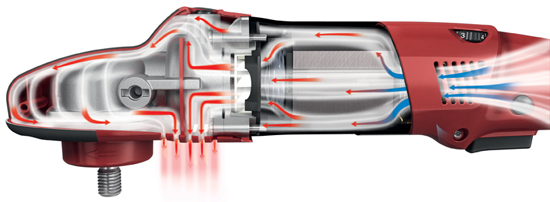Mike Phillips
Active member
- Dec 5, 2022
- 51,004
- 8
Lots of info in this post no matter which rotary buffer you get...
My vote goes with the Flex PE14
From page 3 of this thread,
Bumblebee - Testing out the NEW DeWALT DWP849X
Opinion/Personal Preference - Flex PE14
Both are excellent tools though and you can't go wrong with either one.
Buffing out a special interest vehicle like this because of its size and large smooth panels gave me a really good feel for both rotary buffers. I put the paint through three machine processes, doing a half side of the car with each rotary buffer.
While both tools worked exceedingly well, after hours of holding both tools and working 3 different products, my personal preference at least for the type of polishing I was doing to this car would be for the Flex PE14. In fact by the time I got to the Jewelling step I finished off most of the car using the Flex rotary buffer.
I preferred the lighter weight and more compact size of the Flex to the DeWALT, especially when I was working around the pinstripes, raised or hard body lines and thin panels. I used both rotary buffers without handles.

Rotary Buffer steps completed...




My vote goes with the Flex PE14
From page 3 of this thread,
Bumblebee - Testing out the NEW DeWALT DWP849X
Opinion/Personal Preference - Flex PE14
Both are excellent tools though and you can't go wrong with either one.
Buffing out a special interest vehicle like this because of its size and large smooth panels gave me a really good feel for both rotary buffers. I put the paint through three machine processes, doing a half side of the car with each rotary buffer.
While both tools worked exceedingly well, after hours of holding both tools and working 3 different products, my personal preference at least for the type of polishing I was doing to this car would be for the Flex PE14. In fact by the time I got to the Jewelling step I finished off most of the car using the Flex rotary buffer.
I preferred the lighter weight and more compact size of the Flex to the DeWALT, especially when I was working around the pinstripes, raised or hard body lines and thin panels. I used both rotary buffers without handles.

Rotary Buffer steps completed...
- Compounding: 6.5" CS Orange Cutting Pad with Optimum Compound II at 1000 RPM
- Polishing: 6.5" CS White Polishing Pads with Optimum Polish II at 1000 RPM
- Jewelling: 6.5" CS Red Finishing Pads with Optimum Finish at 600 RPM












